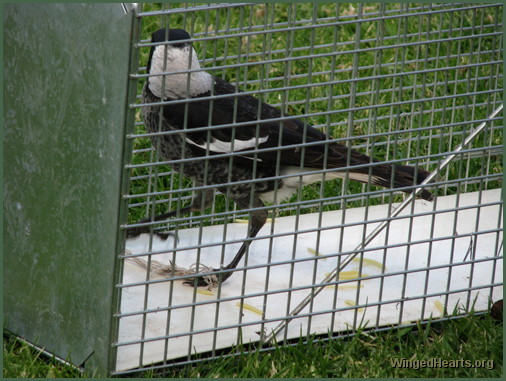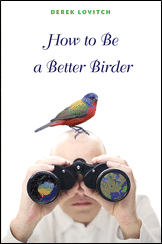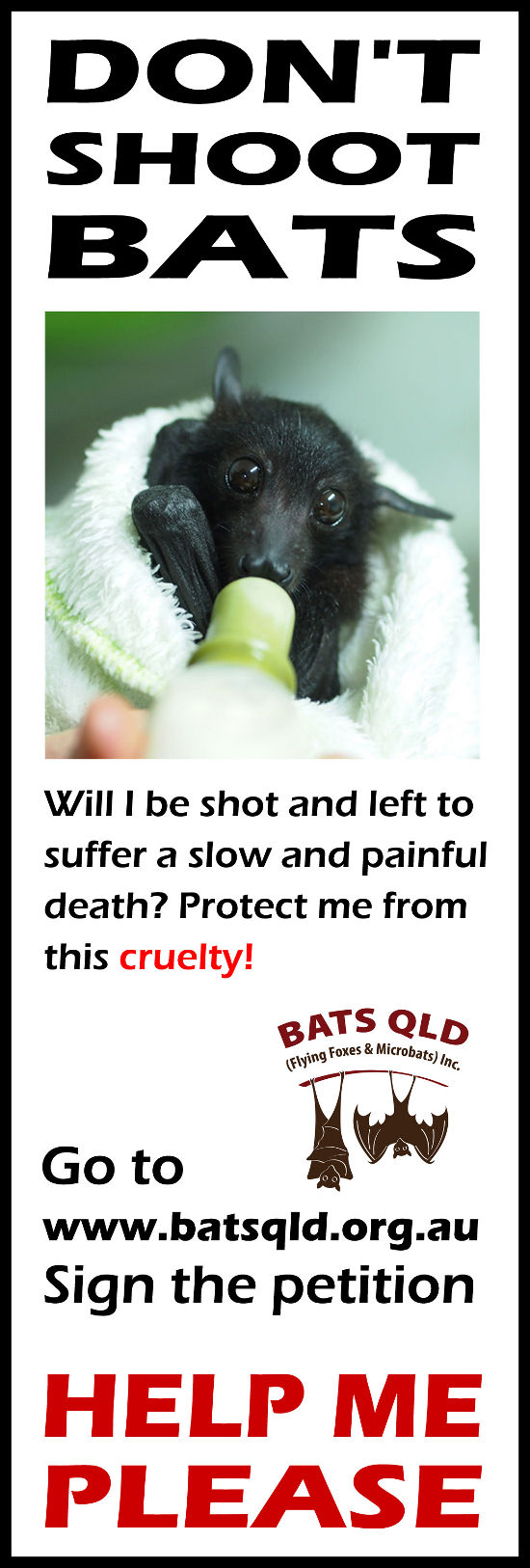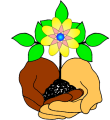Submitted by Gitie on 24 September, 2012 - 22:26
Submitted by Gitie on 18 August, 2012 - 20:47
By Lee McMichael from Bats Qld
On the way back from a work field trip in Gayndah we travelled via Esk where we noticed a gentleman peering up at the powerline on the main street looking distressed.

A tiny black flying fox pup was hanging on for life up there. We stood for quite a while trying to discern whether the little one was alive or dead. After about 10 minutes, a pair of binoculars and some reassuring chatter we saw a pair of little ears prick up. She was alive!

Submitted by Gitie on 16 July, 2012 - 07:57
Submitted by Gitie on 11 July, 2012 - 16:01

Donny Magpie, our nine month old juvi wild magpie who lives around our yard got himself tied up in knots. We saw him flying about with this huge spaghetti mess dangling from his leg.
As you can see from the pictures above and below, his back claw is bent forward and caught in the string as well making it really painful and uncomfortable.

Submitted by Gitie on 25 June, 2012 - 10:30
 How To be A Better Birder is not just for professional birders.
How To be A Better Birder is not just for professional birders.
If you like to know more about how to recognise different species of similar looking birds when they are flying in the air or those that hover around you, Lovitch gives a good set of principles you can use to develop your skills.
The book goes further and describes sing the ‘Whole Bird” approach to identifying the bird. Regular readers know that I’ve been using this approach for many years myself and teac them to do the same, honing in on the finer more unique patterns to identify individual birds.
The more exposure we give our brains to looking at the shape of the birds in flight, or while perched at a distance, the better we become at identifying them from a distance. Lovitch’s sketches of the different sparrows is an amazing example of how the brain can be trained to pick the slight differences in the shape and features of even small birds.

Pages













